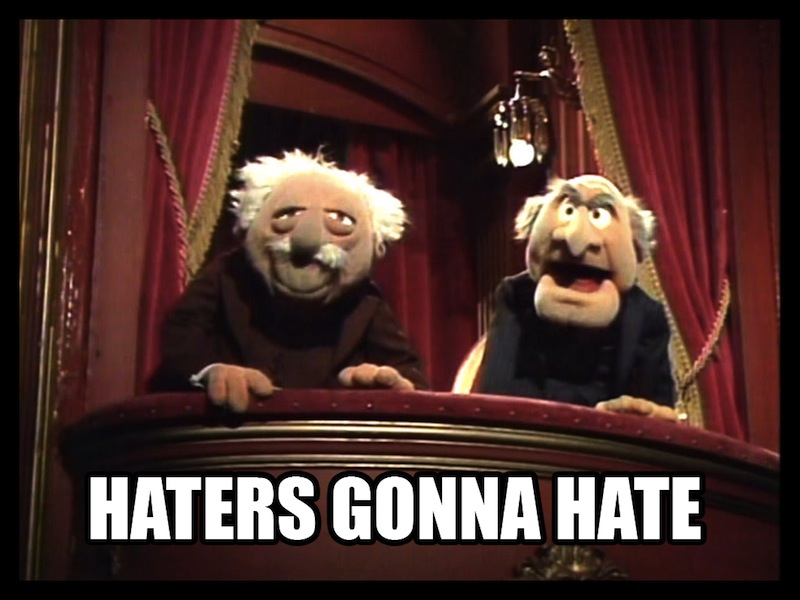“Theatre criticism is a calling, not a career.”
Mark Brown, a critic for the Sunday Herald in Glasgow, said this to me and 11 others from around the world at The International Association of Theatre Critics’s seminar for critics aged 35 and under last fall. He actually said it several times, lest we finish the four days of play-going and discussion thinking our current passion projects would lead to fame and fortune. It wasn’t an incendiary statement for me then, and it likely doesn’t sound so to you now— like all of the arts, a path in criticism is chosen out of enthusiasm for the form, and rarely anything else.
Like in the performing arts industry, there is a hierarchal structure in theatre criticism. But there’s a twist: only a handful of full-time, “legitimate” jobs exist across the country, and with journalism in the state it’s in, it’s unclear whether those positions will exist when their current fillers depart. Nobody, nobody, is in school today with plans on becoming a professional full-time theatre critic—especially not anyone with student debts to pay off or plans on having a family (Brown also pointed out that in the UK, there are currently no full-time female critics with children).
Arts journalism has an interesting parallel to the theatre industry itself: both are supposedly “dying” (whatever that means) industries, suffering from a shrinking audience with shrinking budgets and shrinking attention spans. With the rise of online publications, every click a review gets is as precious as a ticket sold. In theatre, this has translated into various initiatives to target new (possibly younger) audiences: site-specific or immersive theatre (pioneered by Outside the March and Convergence Theatre), pieces that find inventive uses for the online space (Suburban Beast’s rihannaboi95, and this year’s HATCH series at World Stage), or showcase stories that fall outside of Toronto’s typical realm of the older white male (two heroes so far being Theatre Why Not’s A Brimful of Asha and Ins Choi’s Kim’s Convenience). Clearly, there are a few happy stories emerging from this “dying” field, stemming from the innovation of a new generation of theatrical leaders.
The way we cover theatre has not seen a similar sense of innovation: reviews, interviews, and previews sound and look the same as they have for years. Meanwhile, readers have moved online and, like Canadian theatergoers, are searching for new experiences that suit their lifestyles. More than ever, readers are as selective with the pieces they spend precious time reading as they are with dollars they spend on entertainment. And most importantly, they’re looking to see themselves reflected in the pieces they choose to read.
In the latest SWS podcast with Jacob Zimmer and Adrienne Wong Babies Are Racist, Nightswimming Theatre producer Rupal Shah went so far as to claim that white critics are unqualified to review productions made for non-white audiences, and that she won’t read a review if that is the case. First of all, segregating reviews does nothing to help the conversation happening beyond those directly involved in the theatre industry, online or in print. Second, if you don’t regularly read reviews, you don’t have the right to complain. But, also, she may have a point. Diversifying critics will of course encourage a livelier, more inclusive discussion—like in music criticism, which features a healthy mix of cultures and experiences, no doubt because of the wealth of music blogs that have gained professional reputations, discussion of race and culture in an artistic context is usually front and centre. Unfortunately, for the reasons outlined above, theatre criticism isn’t showing any signs of diversifying anytime soon.
This isn’t to discount the number of theatre blogs that have sprouted in Canada, and Toronto especially. They certainly contribute to the much-need diversification of theatre critics working in this country. What they don’t really do is change up the form: everyone follows more or less the same structure, which is an essay-like exploration of the themes, choices, and performances of a production (at least, the good ones are). The kind, say, a Mirvish subscriber would read. Blogs, or other online publications, are the perfect opportunity to find new readers through unconventional methods.
Of course, this would be another task to take on for these already time-crunched volunteer writers, balancing full-time jobs with an industry full of professional and indie companies begging for their time. It seems that the way we cover and discuss the arts isn’t as worthy as making art, at least to the public purse. With no grants, mentorships, or training opportunities available to emerging critics like there are for young artists, it’s highly unlikely that a volunteer (or, something close enough to that) critic will have the time, money, and energy to find a successful alternative for covering and reviewing productions. That’s especially true if we want to maintain the professional reputations that theatre critics (online and in print) have built, and to make sure arts coverage avoids headlines like The First Half Dragged On, But This One Lighting Cue Will Change Your Life or constructing reviews entirely in GIFs (though, cat photos works pretty well). After all, up until relatively recently, no one has really been complaining.
The good news is that, following the trend of theatre criticism so far, there’s little threat of it devolving into pure lifestyle journalism—like Ted Gioia recently argued about music journalism in The Daily Beast. I believe a reason for the stagnation of theatre criticism is simply because there hasn’t been a need, or want, to do so. It just hasn’t been a conversation with deeply invested participants. I believe it’s an important one to have, so it’s encouraging to see an issue of #CdnCult Times devoted specifically to this issue. Jacob Zimmer said himself in the SWS podcast, “I believe the French New Wave happened because they were talking about themselves.” So far, critics have been involved in the conversation around the art happening in Canada, and not about who’s been leading that conversation, and how they’re doing it.










